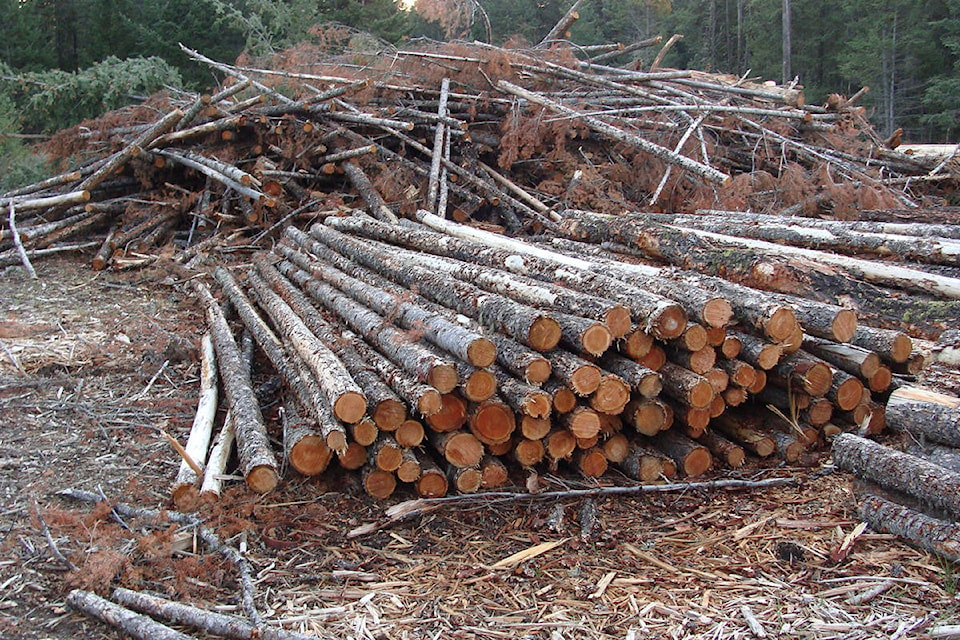After reviewing the recent coverage of the provincial government’s attempts to deal with climate change, I was surprised that there was little mention of potential options in the forest industry. For example, a recent government report estimates that there could be up to 54 million oven dry tons (ODT) over a 10- to 20-year period (2.7 million ODT per year) of forest material that could be used by new forest industries, which could help mitigate the loss of traditional timber lost to insect attack and wildfires.
Up to now, most of this material has been burned in slash piles, so any use of this biomass could help reduce carbon emissions while providing a new source of employment. A joint project between the Inventory Section and FPInnovations produced maps and costs involved to bring this material to designated delivery centres in the 11 Timber Supply Areas (TSA) of the province.
For example, in the Quesnel TSA (with the City of Quesnel being the main delivery point), the total biomass was more than four million ODT for years one to 10, with 85,000 ODT per year at a cost of $60 per ton. This is good news for users of residual products from local sawmills when the lumber production is expected to drop because of a reduced Allowable Annual Cut (AAC). While the amount of biomass in years 11 to 20 is less (30,000 ODT per year), there is nearly triple the amount at a higher price of $90 per dry ton. There could also be additional material from fire proofing and stand rehabilitation projects, which was not considered in the study.
A 2009 study showed Quesnel with seven sawmills, one plywood plant and two pulp plants, which would produce a considerable amount of residual biomass for secondary industries like the MDF and wood pellet plants. If local shortfalls were met after a reduction in the AAC, any extra roadside biomass (especially in more remote areas, like the Nazko area) could be considered for new industries like small-scale electric power generation and pellet plants.
It may take some time for readers to get used to biomass material described in oven dry tons (ODT) rather than cubic meters of logs, but this is necessary because biomass products are chips, sawdust, shavings or bark, which have a wide range of moisture content. High water content can have a major impact of hauling costs as well as burning efficiency in electric power generation. It may take a while for industry to develop new methods of harvesting, storing and drying materials in the field to get a dryer more acceptable product to the right processing facility.
For its part, the government is encouraging companies that may require some of the residual material in the future to form business-to-business relationships with primary harvesters, which will lead to more cost effective “one pass” harvesting systems. If this is not possible, the district manager has a number of discretionary options to assist industries seeking residual biomass, including establishment of fibre recovery zones where primary harvesters are required to provide notice declaring if they will be using the residual fibre, and whether or not they are abandoning their rights to the residual fibre. Two new licences were also established along with a “do not destroy order.”
Although the forest industry is very important in some provinces, bioenergy production from all urban and harvest residues would only supply an estimated four per cent of the total energy used in Canada (Paré et al. 2010).
Jim Hilton is a professional agrologist and forester who has lived and worked in the Cariboo-Chilcotin for the past 40 years. Now retired, Hilton still volunteers his skills with local community forests organizations.
